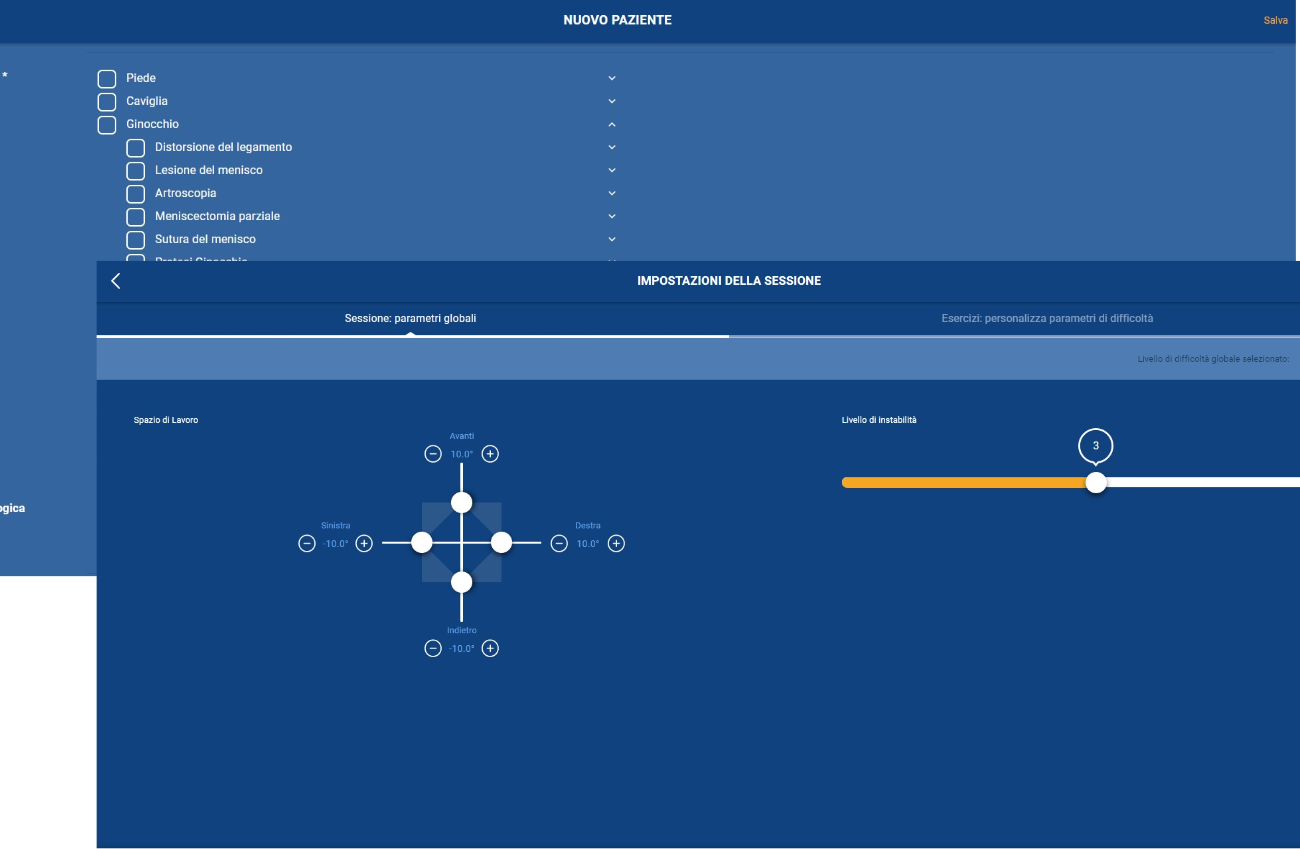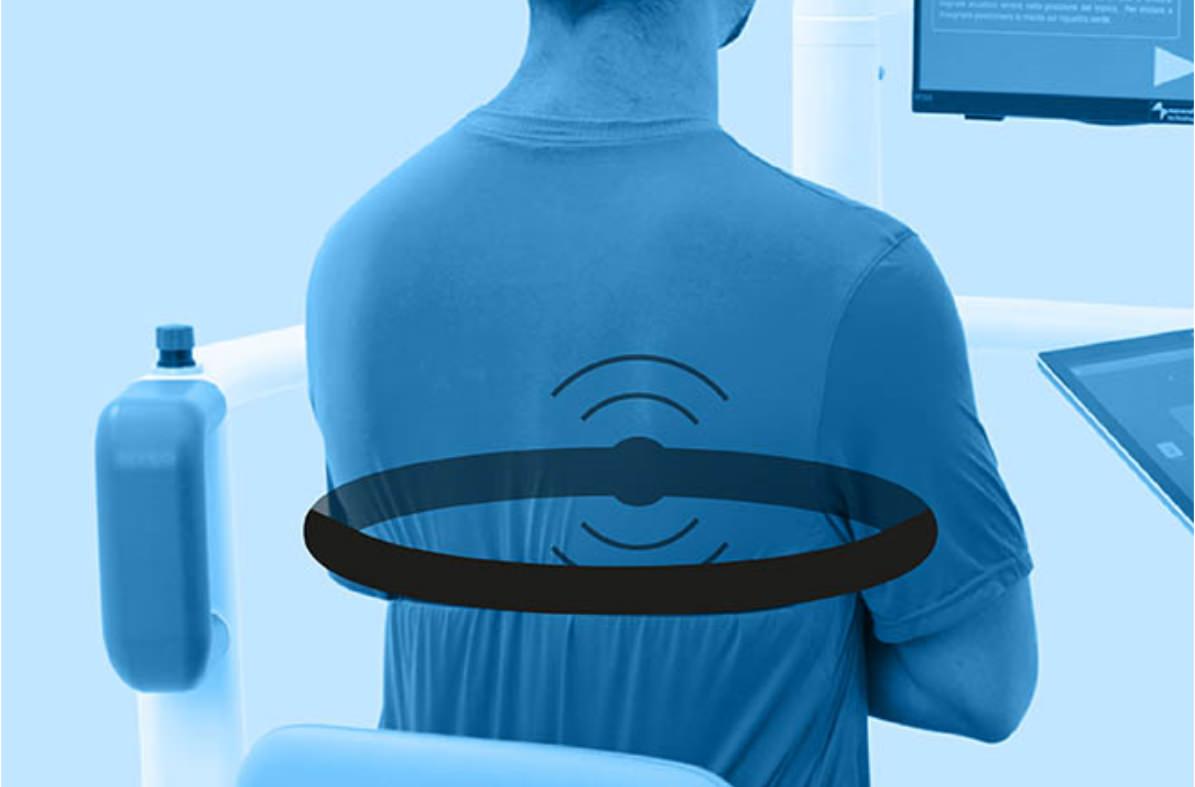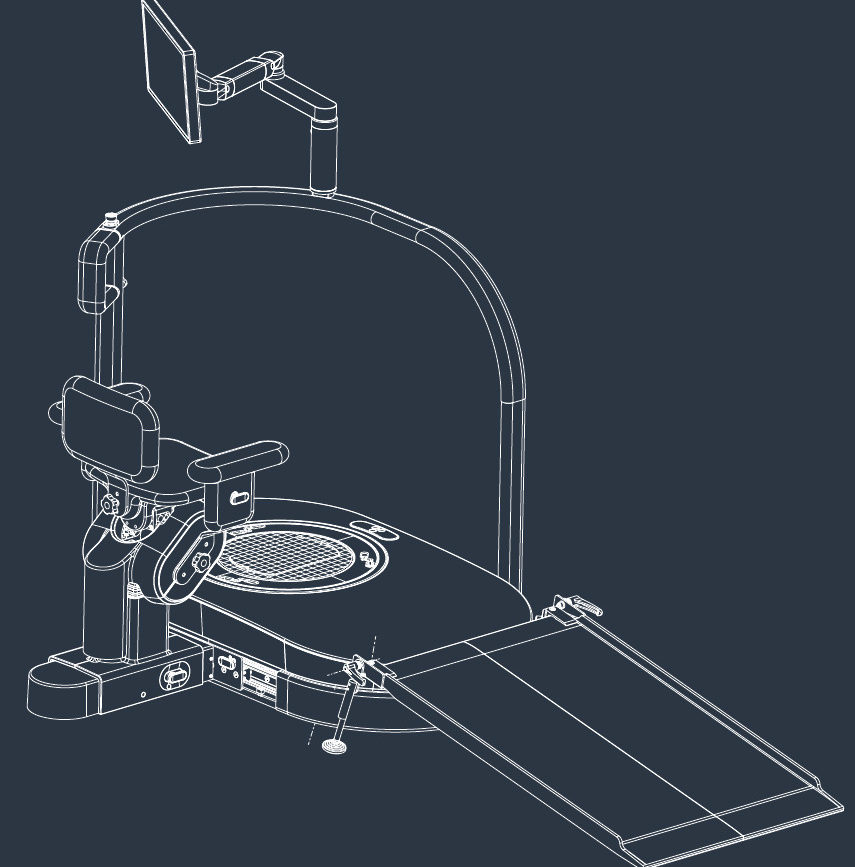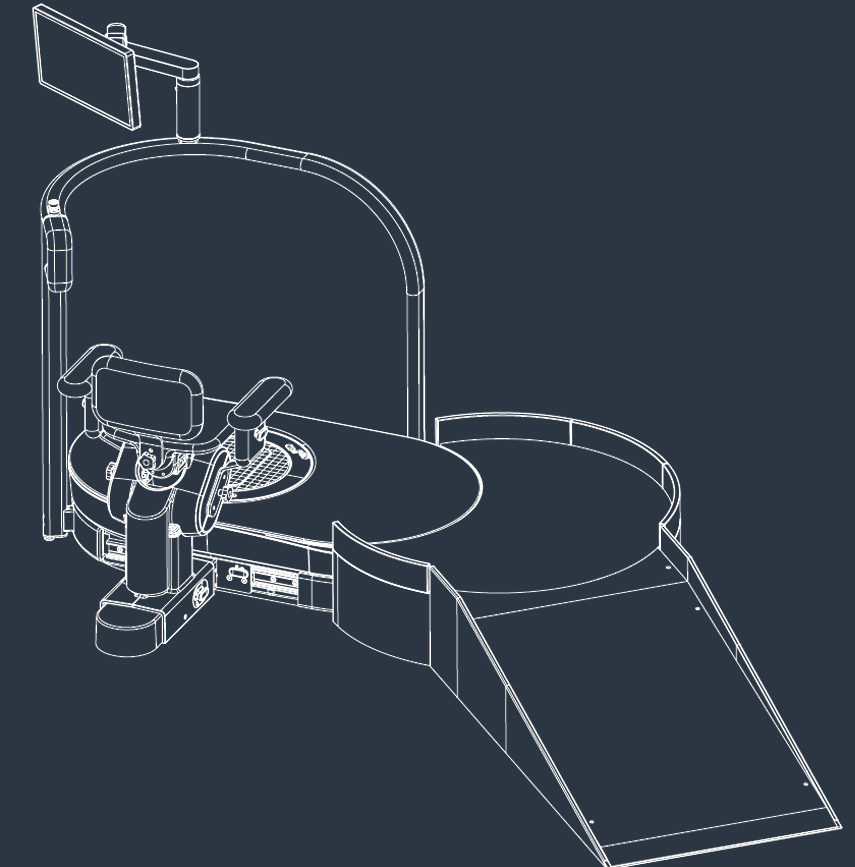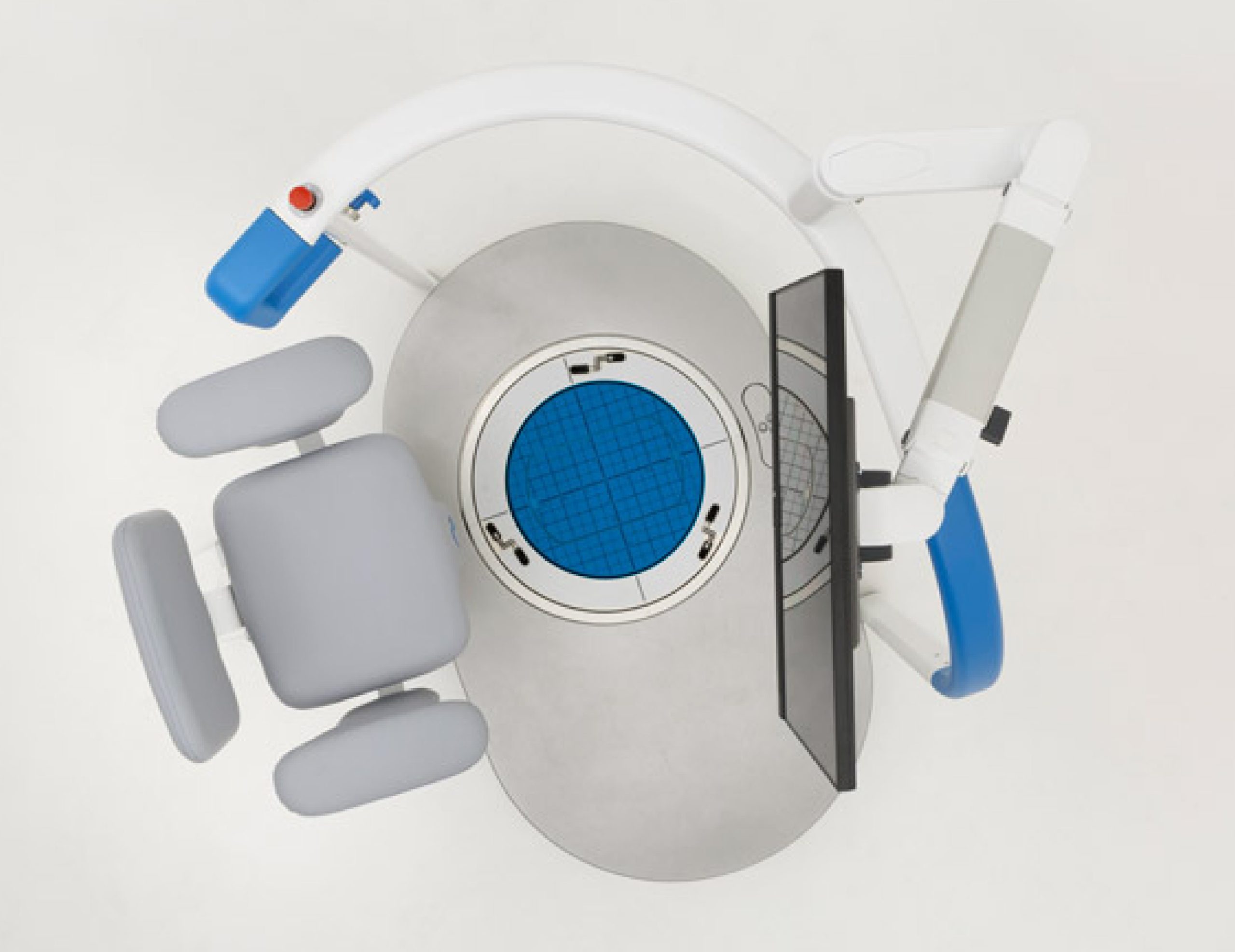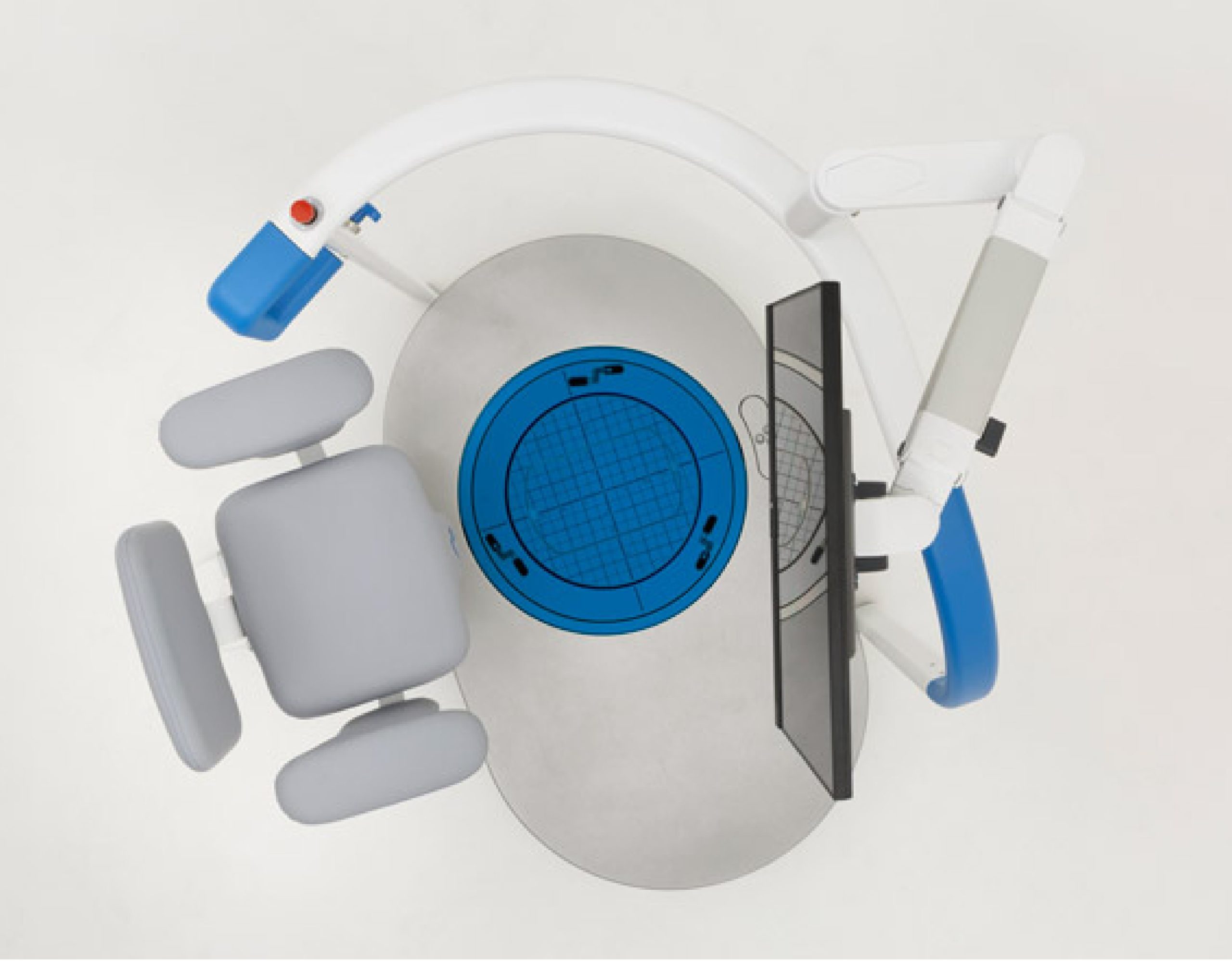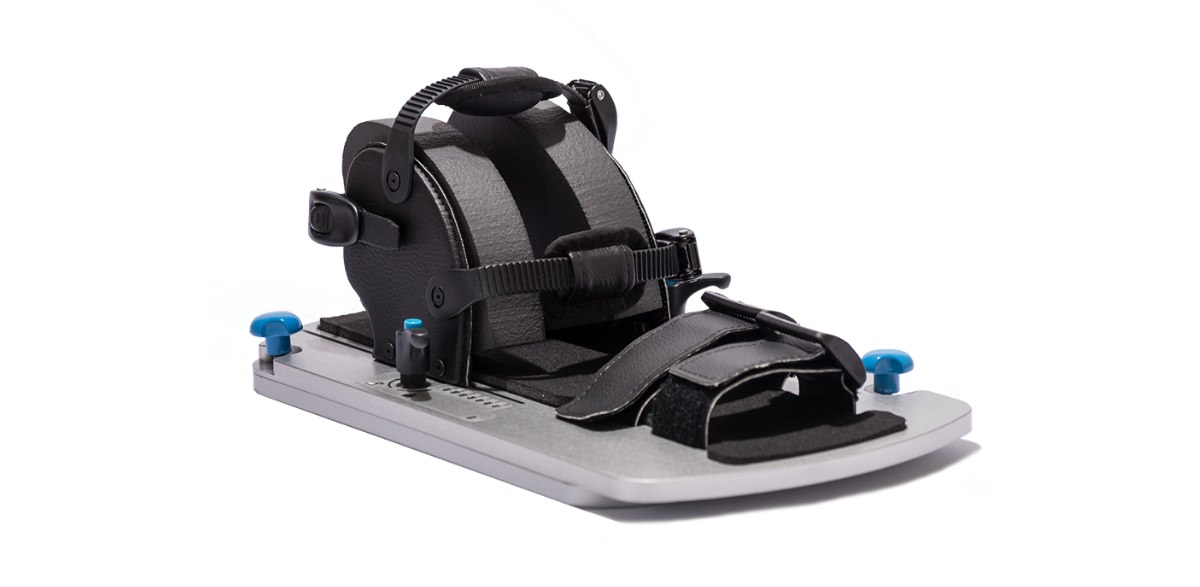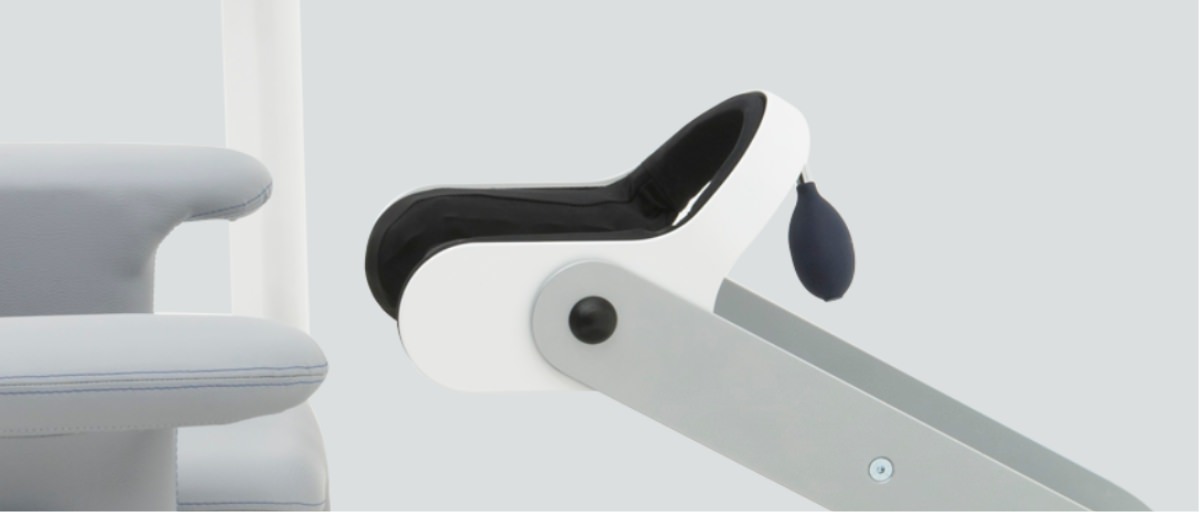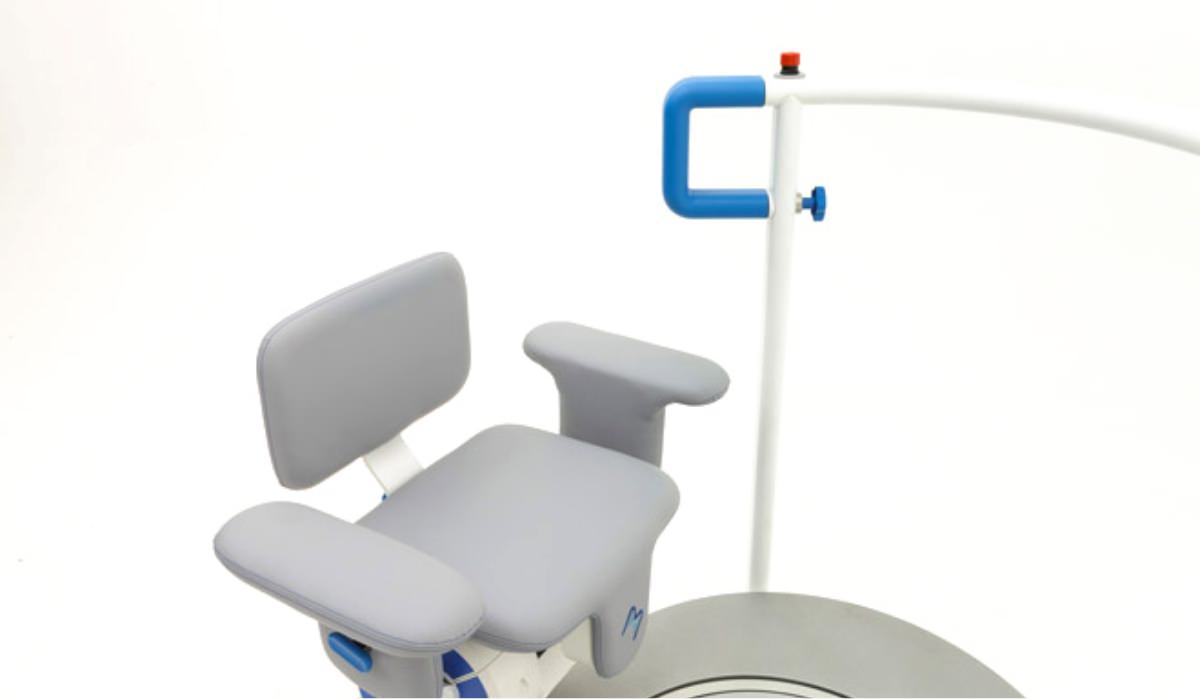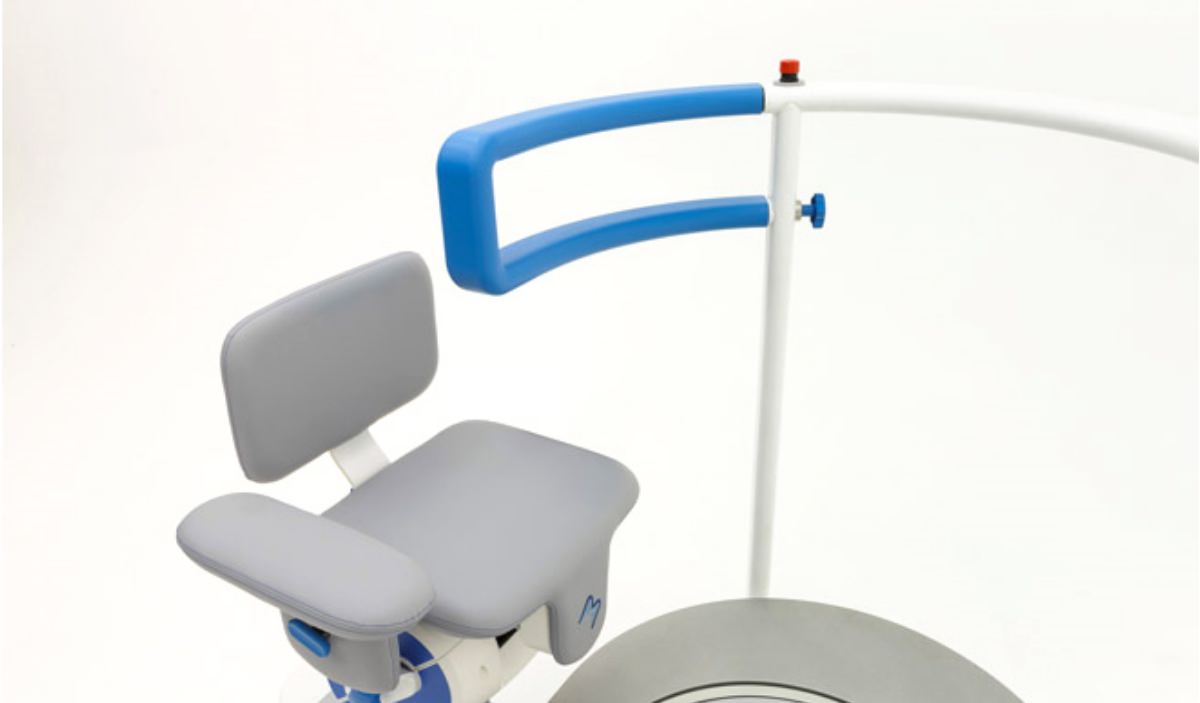Veröffentlichungen mit hunova
Over the past years Movendo Technology completed a great number of clinical studies covering the main areas of orthopedics, neurology, geriatrics and sports, thanks to the collaboration with our clinical partners worldwide.
Papers
2025
- Castelli, L.; Loreti, C.; Malizia, A.M.; Iacovelli, C.; Renzi, S.; Fioravanti, L.; Amoruso, V.; Paolasso, I.; Di Caro, F.; Padua, L.; Giovannini, S. (2025) “The Impact of Robotic Assisted Rehabilitation on Trunk Control in Patients with Severe Acquired Brain Injury (ROARsABI)”. Appl. Sci. 2025, 15, 2539. https://doi.org/10.3390/app15052539
- Castelli, L.; Iacovelli, C.; Malizia, A.M.; Loreti, C.; Biscotti, L.; Bentivoglio, A.R.; Calabresi, P.; Giovannini, S. (2025) “A New Assessment Tool for Risk of Falling and Telerehabilitation in Neurological Diseases: A Randomized Controlled Ancillary Study”. Appl. Sci. 2025, 15, 11247. https://doi.org/10.3390/ app152011247
- Marchesi, G. and Squeri, V. and Bellitto, A. and Pinna, G. and Pierella, C. and Canessa, A. and de Luca, A. and Casadio, M. (2025) “Robot-Based Assessment of Sitting Balance: Muscular Responses to Self- and Externally-Controlled Perturbations in Seated Position”. IEEE Access, vol. 13, pp. 40658-40670, 2025, doi: 10.1109/ACCESS.2025.3540654.
- Misley, E. and Delatto, M.C.; Casadio, M.; Falchi Delitala, T.; Falzarano, V.; Marchesi, G. (2025) “Robot-Based Assessment of Dual Task Activities: Investigating the Impact of Balance Tasks on Cognitive Performance in Older Adults”. 2025 International Conference On Rehabilitation Robotics (ICORR), Chicago, IL, USA, 2025, pp. 870-875, doi: 10.1109/ICORR66766.2025.11063111.
2024
-
Marchesi, G., Arena, G., Parey, A., De Luca, A., Casadio, M., Pierella, C., Squeri, V. (2024) “A Strong Core for a Strong Recovery: A Scoping Review of Methods to Improve Trunk Control and Core Stability of People with Different Neurological Conditions”. Appl. Sci. 2024, 14, 4889.
-
Tendolkar, P., Ibironke, O., Marchesi, G., De Luca, A., Squeri, V., Nolan, K. J., … & Karunakaran, K. K. (2024).“ Relationship between Timed Up and Go performance and quantitative biomechanical measures of balance“. Frontiers in Rehabilitation Sciences, 5, 1220427.
-
Podda, J., Marchesi, G., Bellosta, A., Squeri, V., De Luca, A., Pedullà, L., … & Brichetto, G. (2024). „Testing Dynamic Balance in People with Multiple Sclerosis: A Correlational Study between Standard Posturography and Robotic-Assistive Device“. Sensors, 24(11), 3325.
LoMauro, A., Gervasoni, F., Ricci, V., Salce, G., Andreoli, A., Pantoni, L., & Özçakar, L. (2024). “Sarcopenia and Multisensory Integration Deficit in Post-COVID Syndrome Patients: The Clinical, Ultrasound and Robotic Evaluation Protocol in a Cross-sectional Study”. American journal of physical medicine & rehabilitation, 103(3), 181-187
2023
- Morat, T., Snyders, M., Kroeber, P., De Luca, A., Squeri, V., Hochheim, M., … & Zijlstra, W. “Evaluation of a novel technology-supported fall prevention intervention–study protocol of a multi-centre randomised controlled trial in older adults at increased risk of falls.” BMC geriatrics, 2023 Feb 18;23(1):103. doi: 10.1186/s12877-023-03810-8.
- Podda, J., Marchesi, G., Squeri, V., De Luca, A., Bellosta, A., Pedullà, L., … & Tacchino, A., “Standard versus innovative robotic balance assessment for people with multiple sclerosis: a correlational study.” European Journal of Medical Research, 28(1), 254 (2023). https://doi.org/10.1186/s40001-023-01223-2
- Castelli, L., Iacovelli, C., Loreti, C., Malizia, A. M., Ricciardelli, I. B., Tomaino, A., … & Giovannini, S. “Robotic-assisted rehabilitation for balance in stroke patients (ROAR-S): effects of cognitive, motor and functional outcomes.” European Review for Medical and Pharmacological Sciences, 2023, 27.17. https://doi.org/10.26355/eurrev_202309_33580
- Lippi, L., Turco, A., Folli, A., Vicelli, F., Curci, C., Ammendolia, A., … & Invernizzi, M. “Effects of blood flow restriction on spine postural control using a robotic platform: A pilot randomized cross-over study.” Journal of Back and Musculoskeletal Rehabilitation, 2023;36(6):1447-1459. doi: 10.3233/BMR-230063.
- Temporiti, F., Scandelli, F., Gottardo, F. M., Falco, M., Rossi, S., Adamo, P., & Gatti, R. “Balance improvements in healthy subjects are independent to postural strategies involved in the training.” Gait & Posture 101 (2023): 160-165. https://doi.org/10.1016/j.gaitpost.2023.02.014
- Misley, E., Parey, A., Falzarano, V., Marchesi, G., Casadio, M., Falchi Delitala, T. „Robot-based assessment and training of motor-cognitive dual-task abilities“ 2023, 5th Italian Conference on Robotics and Intelligent Machines.
-
Castelli, L., Iacovelli, C., Ciccone, S., Geracitano, V., Loreti, C., Fusco, A., Biscotti, L., Padua, L., Giovannini, S. „RObotic-Assisted Rehabilitation of Lower Limbs for Orthopedic Patients (ROAR-O): A Randomized Controlled Trial.“ Appl. Sci. 2023, 13, 13208. https://doi.org/10.3390/app132413208
2022
- Aprile I., Conte C., Cruciani A., Pecchioli C., Castelli L., Insalaco S., Germanotta M., Iacovelli C.. “Efficacy of Robot-Assisted Gait Training Combined with Robotic Balance Training in Subacute Stroke Patients: A Randomized Clinical Trial.” J Clin Med. 2022 Aug 31;11(17):5162. doi: 10.3390/jcm11175162. PMID: 36079092; PMCID: PMC9457020.
- Giovannini S., Brau F., Galluzzo V., Santagada D., Loreti C., Biscotti L., Laudisio A., Zuccalà G., Bernabei R. (2022). “Falls among Older Adults: Screening, Identification, Rehabilitation, and Management.” Applied Sciences. 12. 7934. 10.3390/app12157934
- Payedimarri, A.B., Ratti, M., Rescinito R., Vanhaecht K., Panella M., “Effectiveness of Platform-Based Robot-Assisted Rehabili-tation for Musculoskeletal or Neurologic Injuries: A Systematic Review.” Bioengineering 2022, 9, 129. https://doi.org/10.3390/bioengineering9040129
- Marchesi G., De Luca A., Squeri V., De Michieli L., Vallone F., Pilotto A., Leo A., Casadio M., Canessa A. (2022). “Lifespan Approach to Balance in Static and Dynamic Conditions: The Effect of Age on Balance Abilities.” Frontiers in Neurology, vol. 13 https://www.frontiersin.org/article/10.3389/fneur.2022.801142. Doi: 10.3389/fneur.2022.801142.
- Giovannini S., Iacovelli C., Brau F. et al. “RObotic-Assisted Rehabilitation for balance and gait in Stroke patients (ROAR-S): stu-dy protocol for a preliminary randomized controlled trial.” Trials (2022) 23:872. https://doi.org/10.1186/s13063-022-06812-w
- Barresi G., Zenzeri J., Tessadori J., Laffranchi M., Semprini M., De Michieli L. (2022) “Neuro-Gerontechnologies: Applications and Opportunities.” In: Scataglini S., Imbesi S., Marques G. (eds) Internet of Things for Human-Centered Design. Studies in Compu-tational Intelligence, vol 1011. Springer, Singapore. https://doi.org/10.1007/978-981-16-8488-3_7
2021
- Maggio M.G., Naro A., Calatozzo P., Rosa G., Porcari B., Latella D., Marzullo P., Calabrò R.S. “Rehabilitation of somatoparaphrenia with misoplegia: insights from a single case-pilot study” J Integr Neurosci. 2021 Jun 30;20(2):439-447. doi: 10.31083/j.jin2002046. PMID: 34258945.
- Calabrò R.S., Billeri L., Ciappina F., Balletta T., Porcari B., Cannavò A., Pignolo L., Manuli A., Naro A. “Toward improving functional recovery in spinal cord injury using robotics: a pilot study focusing on ankle rehabilitation.” Expert Rev Med Devices. 2021 Mar 5:1-13. doi: 10.1080/17434440.2021.1894125. Epub ahead of print. PMID: 33616471.
- Spina S., Facciorusso S., Cinone N., Armiento R., Picelli A., Avvantaggiato C., Ciritella C., Fiore P., Santamato A. “Effectiveness of robotic balance training on postural instability in patients with mild Parkinson’s disease: A pilot, single blind, randomized controlled trial.” J Rehabil Med. 2021 Feb 17;53(2): jrm00154. doi: 10.2340/16501977-2793. PMID: 33585943.
- Gervasoni F., LoMauro A., Ricci V., Salce G., Andreoli A., Visconti A., Pantoni L. “Balance and visual reliance in post-COVID syndrome patients assessed with a robotic system: a multi-sensory integration deficit.” Neurol Sci. 2021 Oct 6:1–4. doi: 10.1007/s10072-021-05647-8. Epub ahead of print. PMID: 34613505; PMCID: PMC8493357.
- Pilkar R., Veerubhotla A., Ehrenberg N. “Objective evaluation of the risk of falls in individuals with traumatic brain injury: feasibility and preliminary validation.” Annu Int Conf IEEE Eng Med Biol Soc. 2021 Nov;2021:4658-4661. doi: 10.1109/EMBC46164.2021.9630020. PMID: 34892252.
2020
- Marchesi G., Ricaldone E., De Luca A., Torre K., Quinland E., Bellitto A., Squeri V., Massone A., Casadio M. Canessa A.,“A robot based assessment of trunk control in Spinal Cord Injured athletes”, (2020) 8th IEEE RAS/EMBS International Conference for Biomedical Robotics and Biomechatronics (BioRob), New York City, NY, USA, 2020, pp. 497-502, doi: 10.1109/BioRob49111.2020.9224337
- Cella A, De Luca A., Squeri V., Parodi S., Vallone F., Giorgeschi A., Senesi B., Zigoura E., Guerrero K., De Michieli L., Saglia J.A., Sanfilippo C., Pilotto A. (2020) “ Development and validation of a robotic multifactorial fall-risk predictive model: a one-year prospective study in community-dwelling older adults” PLoS ONE 15(6): e0234904. https://doi.org/10.1371/journal. pone.0234904
- De Luca A., Squeri V., Barone L., Vernetti H., Ricci S., Pisu I., Cassiano C., Capra C., Lentino C., De Michieli L., Sanfilippo C., Saglia J.A., Checchia G. (2020) “Dynamic Stability and Trunk Control Improvements Following Robotic Balance and Core Stability Training in Chronic Stroke Survivors: A Pilot Study.” Front. Neurol. 11:494. doi: 10.3389/fneur.2020.00494
2019
- Cella A., De Luca A., Squeri V., Parodi S., Puntoni M., Vallone F., Giorgeschi A., Garofalo V., Zigoura E., Senesi B., De Michieli L., Saglia J.A., Sanfilippo C., PilottoA. (2019) “Robotic Balance Assessment in Community-Dwelling Older People with Different Grades of Impairment of Physical Performance.” Aging Clinical and Experimental Research.
- Marchesi G., Casadio M., Ballardini G., De Luca A., Squeri V., Vallone F., Giorgini C., Crea P., Pilotto A., Sanfilippo C., Saglia J.A., Canessa A. (2019) “Robot-Based Assessment of Sitting and Standing Balance: Preliminary Results in Parkinson’s Disease.” Pp. 570–76 in 2019 IEEE 16th International Conference on Rehabilitation Robotics (ICORR).
- Saglia J.A., De Luca A., Squeri V., Ciaccia L., Sanfilippo C., Ungaro S., De Michieli L. (2019) “Design and Development of a Novel Core, Balance and Lower Limb Rehabilitation Robot: Hunova®.” Pp. 417–22 in 2019 IEEE 16th International Conference on Rehabilitation Robotics (ICORR).
Conferences
2023
- Carlson-Kuhta P., Silva-Batista C., Ragothaman A., Ellison J., Harker G., Marchesi G., De Luca A., Squeri V., Horak F.B., Mancini M., “Use of a novel comprehensive balance assessment to measure fall risk in people with Parkinson’s disease”. 6th World Parkinson Congress, Barcelona, Spain, 4-7 July 2023.
- Silva-Batista C., Ellison J., Harker G., Carlson-Kuhta P., Dale M., Marchesi G., De Luca A., Horak F.B., Mancini M., “Objective measure of Balance and Fall Risk in People with Parkinson’s Disease: impact of Freezing of Gait”. The International Society of Posture and Gait Research, 2023.
2022
- Podda J., Tacchino A., Marchesi G., De Luca A., Squeri V., Pedullà L., Bellosta A., Monti Bragadin M., Rogina G., Vitiello A., Rinaldi S., Isolabella L., Tortorolo A., Addeo S., Battaglia M.A., Konrad G., Brichetto G., “Studio di non-inferiorità di un protocollo riabilitativo eseguito con dispositivo robotico rispetto ad un trattamento tradizionale per migliorare l’equilibrio nelle persone con sclerosi multipla”. XXI congresso nazionale della Società Italiana di Riabilitazione Neurologica, SIRN, 12-14 Giugno, 2022. Napoli.
- Iacovelli C., Castelli L., Caliandro P., Salvatori G., Padua L., Bernabei R., Giovannini S. “Valutazione dell’equilibrio e del cammino in pazienti con ictus: correlazione tra indici stabilometrici e parametri di Gait Analysis”. XXI congresso nazionale della Società Italiana di Riabilitazione Neurologica, SIRN, 12-14 Giugno, 2022. Napoli.
- Giovannini S., Castelli L., Iacovelli C., Salvatori G., Padua L., Bernabei R. “Efficacia della riabilitazione robotica dell’equilibrio nel paziente anziano con esisti di stroke”. XXI congresso nazionale della Società Italiana di Riabilitazione Neurologica, SIRN, 12-14 Giugno, 2022. Napoli.
- Castelli L., Iacovelli C., Padua L., BernabeiR., Giovannini S. “L’impatto sulla performance cognitiva della riabilitazione robotica per l’equilibrio nel paziente anziano con esisti di stroke”. XXI congresso nazionale della Società Italiana di Riabilitazione Neurologica, SIRN, 12-14 Giugno, 2022. Napoli.
- Giovannini S., Castelli L., Iacovelli C., Salvatori G., Padua L., Bernabei R. “Efficacia della riabilitazione robotica dell’equilibrio nel paziente anziano con esisti di stroke”. 50° Congresso Nazionale della Società italiana della Medicina Fisica e Riabilitativa, SIMFER, 23-26 Ottobre, 2022. Catania
- Castelli L., Iacovelli C., Padua L., BernabeiR., Giovannini S. “L’impatto sulla performance cognitiva della riabilitazione robotica per l’equilibrio nel paziente anziano con esisti di stroke”. 50° Congresso Nazionale della Società italiana della Medicina Fisica e Riabilitativa, SIMFER, 23-26 Ottobre, 2022. Catania
- Marchesi G., Bellitto A., Torre K., Quinland E., Gamba S., De Luca A., Canessa A., Squeri V., Massone A., Casadio M., “Assessment of trunk control and core stability in spinal cord injured subjects”. 22° congresso annuale della società italiana di analisi del movimento in clinica. 5-8 ottobre 2022, Bari
- Iacovelli C., Castelli L., Giovannini S., Salvatori G., Bernabei R., Caliandro P.. “Evaluation of balance and gait in stroke patients: correlation between stabilometric indices and gait analysis parameters”. 22° congresso annuale della società italiana di analisi del movimento in clinica. 5-8 ottobre 2022, Bari
- Podda J., Tacchino A., Marchesi G., De Luca A., Squeri V., Pedullà L., Bellosta A., Monti Bragadin M., Rogina G., Vitiello A., Rinaldi S., Isolabella L., Tortorolo A., Addeo S., Battaglia M.A., Konrad G., Brichetto G., „Balance rehabilitation in people with Multiple Sclerosis: robotic versus usual care intervention protocols“. 38th Congress of the European Committee for Treatment and Research in Multiple Sclerosis (ECTRIMS 2022). 26-28 ottobre, 2022.
- Marchesi G., Bellitto A., Torre K., Quinland E., Gamba S., De Luca A., Canessa A., Squeri V., Casadio M., Massone A., “Valutazione del controllo di tronco e della core stability in soggetti affetti da lesioni al midollo spinale”. XIX Congresso Nazionale SIMS, 10-12 Novembre, 2022. Bari
2021
- Podda J., Tacchino A., De Luca A., Squeri V., Pedullà L., Bellosta A., Monti Bragadin M., Rogina G., Vitiello A., Rinaldi S., Isolabella L., Tortorolo A., Addeo S., Battaglia M.A., Konrad G., Brichetto G. “Testing balance in MS: A correlation study between data from traditional computerized dynamic posturography and the robot hunova.” 26th Annual RIMS Conference 2021 – Digital edition, 26-27 November 2021.
- Veerubhotla A., Ehrenberg N., Ibironke O., Pilkar R. “Objective Evaluation of Risk of Falls in Individuals with Chronic Stroke: Feasibility Study.” Archives of Physical Medicine and Rehabilitation 2021, Volume 102, Issue 10, Page e101. ISSN 0003-9993.
- De Luca A., Cella A., Squeri V., Vallone F., Pilotto A. “Silver Index: a new tool to predict and treat the risk of falls in elderly subjects.” 36ème congrès de la Société Française de Médecine Physique et Réadaptation, 14 – 16 octobre 2021, Lille, France.
- Gervasoni F., Ricci V., Agostini A., Arrigo M., Salce G., Romano Bernardini L., Lo Mauro A., Andreoli A. “Metacovid-19. Clinical and robotic assessment of neuromuscular symptoms in post covid syndrome.” 36ème congrès de la Société Française de Médecine Physique et Réadaptation, 14 – 16 octobre 2021, Lille, France.
2020
- Marchesi G., Pinna G., Bellitto A., Canessa A., De Luca A., Saglia J.A., Sanfilippo C ., Squeri V., C asadio M . “ A robot-based evaluate on of the volitional component of pelvis and trunk control.” ISEK XXIII Virtual congress (July 12-14, 2020).
- Marchesi, G., Bellitto, A., Ricaldone, E., De Luca, A., Sanfilippo, C., Torre, K., Quinland, E., Saglia, J., Squeri, V., Massone, A. and Casadio, M., 2020, October. „Evaluation of Balance Abilities in Expert Paralympic Athletes with Lower Limb Amputation. In International Conference on NeuroRehabilitation“ (pp. 213-217). Springer, Cham.
2019
- Marchesi G., Canessa A., De Luca A., De Michieli L., Pilotto A., Vallone F., Cella A., Spinelli M., Leo A., Sanfilippo C., Squeri V., Saglia J.A., Casadio M. “Robot-based static and dynamic balance assessments for planning age-tailored training protocol.” 49th Annual Meeting of the Society for Neuroscience (Chicago, October 19-23, 2019). congress (July 12-14, 2020).
2018
- Cella A., Squeri V., De Luca A., Zigoura E., Vallone F., Senesi B., Giorgeschi A., Quispe Guerrero KL., Garofalo V., De Michieli L., Saglia J.A., Sanfilippo C., Pilotto A. “Balance robotic evaluation wi th hunova in older people: correlation wi th Short Physical Performance Battery (SPPB).” 14th EUGSM International Congress of the European Geriatric Medicine Society, Berlin October 10-12, 2018.
- Cannaviello G., Lorenzon C., Giovanzana C., Colombo M., Gaffuri M., Guanziroli E., Molteni F. “Valutazione dell’equilibrio statico e dinamico con piattaforma robotizzata Hunova post ictus.” XLVI Congresso Nazionale SIMFER, Ancona 20-23 settembre 2018.
- Giorgini C., Vallone F., Crea P., De Luca A., Squeri V., Corrieri N., Aguzzoli P., Cella A., Prete C., Senesi B., Giorgeschi A., Saglia J.A., Sanfilippo C., Pilotto A. “Efficacia di un trattamento robotico focalizzato su balance e core stability in pazienti affetti da morbo di Parkinson: studio pilota.” XLVI Congresso Nazionale SIMFER, Ancona 20-23 settembre 2018.
- Specchia A., Brambilla E., Cazzaniga M., Terenghi L., Guanziroli E., Molteni F. “Utilizzo della piattaforma robotica per il training dell’equilibrio nella sindrome del motoneurone superiore.” XLVI Congresso Nazionale SIMFER, Ancona 20-23 settembre 2018.
- Taglione E., Graziano A., D’Angelo M.L., Squeri V., D’Angelo F., De Marco E., Filippetti R., Pasqualetti F., Rapalli A., Saglia J.A., Sanfilippo C., Laffranchi M., Catitti P., De Michieli L. “Valutazione posturale dinamica e training propriocettivo con il robot hunova: risultati preliminari di uno studio RCT in pazienti con deficit deambulatorio a seguito di lesioni traumatiche.” XLVI Congresso Nazionale SIMFER, Ancona 20-23 settembre 2018.
- Vallone F., Squeri V., De Luca A., Cella A., Siri G., Zigoura E., Giorgeschi A., Tavella E., Puntoni M., Avella M., Garofalo V., Aguzzoli P., De Michieli L., Saglia J.A., Sanfilippo C., Pilotto A. “Valutazione robotica del balance nell’anziano: correlazione con i parametri funzionali.” XLVI Congresso Nazionale SIMFER, Ancona 20-23 settembre 2018.
- Vallone F., Damiani G., D’Angelo M.L., De Luca A., Squeri V., De Michieli L., Saglia J.A., Sanfilippo C., Corrieri N., Giorgini C., Aguzzoli P., Carnevali G., Garofalo V., Rinzivillo F., Soddu B., Pilotto A., Mazzola C. “Valutazione e training riabilitativo con il dispositivivo robotico hunova nel recupero della stabilità posturale dinamica: protocollo interventistico, in aperto, randomizzato, controllato su pazienti dopo ricostruzione chirurgica di LCA.” XLVI Congresso Nazionale SIMFER, Ancona 20-23 settembre 2018.
- Leo A., Zarbo M., Cassinis A., Pometto D., Re L., Bianconi T., Gambirasio C., Spinelli M. “The use of the robotic device Hunova® as a rehabilitation tool for functional balance in individuals with Spinal Cord Injury.” The 57th ISCoS Annual Meeting, Sydney 13-15 Sempteber 2018.
- Squeri V., De Luca A., Vallone F., Cella A., Siri G., Zigoura E., Giorgeschi A., Tavella E., Puntoni M., Avella M., Garofalo V., Aguzzoli P., De Michieli L., Saglia J.A., Sanfilippo C., Pilotto A. “Robotic evaluation of fall risk in older people: results on trunk parameters in static and dynamic balance conditions by hunova robot.” 12TH ISPRM WORLD CONGRESS – ISPRM 2018 (08 – 12 July 2018, Paris).
- Taglione E., Catitti P., D’Angelo M.L., Squeri V., Saglia J.A., Sanfilippo C., De Michieli L. “Proprioceptive and motor training using the high performance robotic device Hunova: protocol of a randomized, controlled trial in patients with lower limb post-traumatic conditions.” 12TH ISPRM WORLD CONGRESS – ISPRM 2018 (08 – 12 July 2018, Paris).
- Leo A., Zarbo M., Cassinis A., Spinelli M. “The use of the robotic device Hunova® as a rehabilitation tool for functional balance in individuals with Spinal Cord Injury.” 12TH ISPRM WORLD CONGRESS – ISPRM 2018 (08 – 12 July 2018, Paris).
2017
Squeri V., Cella A., Saglia J.A., Giusti A., Prete C., Vallone F., Senesi B., Zigoura E., Tavella E., Ciaccia L., Avella M., Garofalo V., Aguzzoli P., Sanfilippo C., Pilotto A. “Fall risk assessment in elderly people using hunova, a robotic rehabilitation device” Osteoporosis International, 2017, vol. 28 (SUPPL 1), (no. 127), pp. S425-S425. Doi: https://doi.org/10.1007/s00198-017-3950-2
2016
Taglione E., De Marco E., Pasqualetti F., Rapalli A., Squeri V., Masia L., Caldwell D. G. , Catitti P., Saglia J.A. “Sperimentazione del dispositivo robotico ARBOT nella riabilitazione della caviglia a seguito di lesioni fratturative: risultati di uno studio clinico randomizzato controllato.” 44° Congresso Nazionale SIMFER 2016 (23-26 ottobre, Bari).
2015
Taglione E. ,De Marco E. , Pasqualetti F. , Rapalli A. , Squeri V. , Masia L. , Caldwell DG. , Catitti P. , Saglia J.A. “Ankle rehabilitation using the high-performance robotic device IIT-ARBOT: study protocol and preliminary results.” 9th World Congress of the International Society of Physical and Rehabilitation Medicine, vol. J Rehabil Med 2015, (no. Suppl 54), (19–23 June 2015, Berlin)

